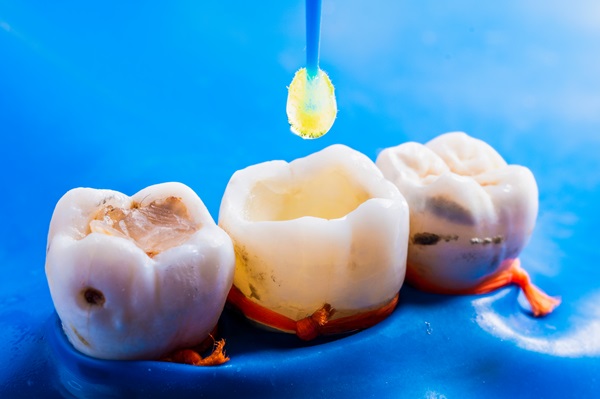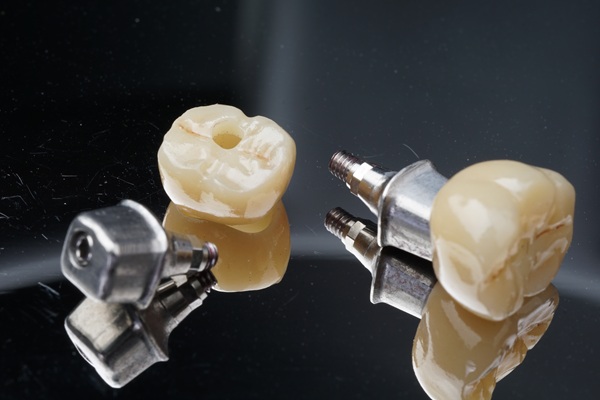Before and After Your Dental Bonding Procedure

Many patients are nervous before a dental bonding procedure, although the procedure itself is non-invasive, only takes one dental visit and does not require any anesthesia. You can prepare yourself mentally and physically for the procedure, however, by knowing what to expect, how to prepare and what to plan for after the procedure.
A review of the entire dental bonding procedure
The following details what to expect during the dental bonding procedure, how to prepare and what to expect after dental bonding. Overall, the procedure is simple and patients have nothing to fear, but learning more can help calm any anxieties that they may have before the day of the visit.
How to prepare for the dental bonding procedure
There are no noteworthy preparations in advance of a dental bonding procedure. However, there are ways to deal with anxiety before the visit and ways to ensure that the process goes as smoothly as possible. First, schedule the visit at a convenient time. This could be in the afternoon after work or school or early in the morning before the day begins, whichever option is best for the patient. They should be sure to do something relaxing the night before and get a good night of rest. Also, it is important to allow enough time to get to the dentist's office on time without having to rush.
What to expect during the dental bonding procedure
The procedure itself is pain-free and takes place in a comfortable chair inside the dentist's office. The dentist starts by cleaning the tooth (or teeth) that are receiving the dental bonding, followed by the placement of the bonding material (composite resin). The composite resin is carefully crafted to achieve the desired result, whether it is to lengthen a short tooth, repair a chip or crack or address another cosmetic imperfection. The material is then bonded into place with a special dental light, and the dentist can clean and polish the tooth for beautiful results.
The process after dental bonding and how to recover
Most dentists do not use any anesthesia during the dental bonding procedure, and the patient is welcomed to drive home the same day if they feel okay and are able to do so. The tooth may feel weird for several hours, and the patient may prefer to eat softer foods for the first day after dental bonding. For the long term, the patient should protect their teeth by treating bruxism (if necessary), taking precautions during contact sports by wearing a mouthguard and practicing good oral hygiene. Ideally, patients should brush two times a day, floss after each meal and use mouthwash daily, along with regular check-up visits with the general dentist.
Discuss dental bonding with our team to learn more
Dental bonding is a viable solution for many patients, and here at our dentistry, we believe that everyone should have a smile that they are confident showing off. Call us or send us a message to begin the treatment process with dental bonding.
Are you considering dental bonding in the Danvers area? Get more information at https://www.libertytreeprosthodontics.com.
Check out what others are saying about our dental services on Yelp: Dental Bonding in Danvers, MA.
Recent Posts
Dental bonding has long been a common method of tooth restoration. Your dentist has the knowledge and training to successfully perform this procedure. The dentist will also know when it is appropriate to use bonding to repair a tooth or other oral health or cosmetic issue. There are certain situations where this makes more sense…
Dental Bonding Danvers, MAThose with one or more imperfections in their front teeth may benefit from dental bonding. Today's dental patients can benefit from the many recent dental advances that allow for both better functioning and better cosmetics. Dental bonding can fix teeth in one to three appointments so that patients can smile with renewed…
Wondering whether you should choose dental bonding services or dental contouring services to repair one or more issues with your teeth? These two popular cosmetic options both work to improve the way one looks when they smile. When it comes to which option someone should choose to improve their smile, read on for in-depth information.Thinking…
Dental bonding involves a dentist applying a tooth-colored, special resin to a tooth that needs fixing. It is used to hide defects and abnormalities on a tooth or simply to improve the way it looks. This treatment can also help with oral problems like tooth decay. To answer the question posed in the title, dental…


